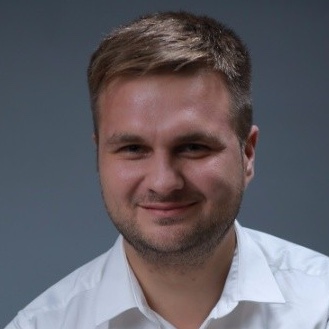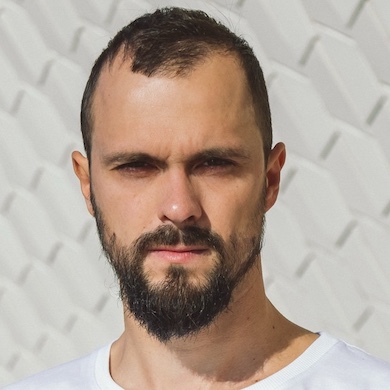O-1 Visa Category at a Glance
The O-1 is a temporary U.S. work visa for people with extraordinary ability shown by sustained national or international acclaim in science, education, business, athletics, or the arts. It also covers those with extraordinary achievement in film or television. Employers or agents in the U.S. petition for eligible talent, and certain team members and family can come too.
Subtypes:
O-1A – Extraordinary ability in science, education, business, or athletics (our focus)
O-1B – Extraordinary ability in the arts or extraordinary achievement in film/TV.
O-2 – Essential support staff accompanying an O-1 artist or athlete for a specific event.
O-3 – Spouse and unmarried children of O-1 or O-2 holders (this is a dependent visa – allows travel but does not authorize work in the U.S.)
Basics of O-1A
To qualify for O-1A, you must have sustained national or international acclaim demonstrating extraordinary ability, show recognized achievements in your field, and plan to continue working in that field in the U.S.
Note: for an O-1A visa, you need a U.S. employer or agent to file the petition on your behalf. The process is relatively light, since O-1A does not require a lottery (like H-1B) and does not require labor certification (like EB-2). Unlike EB-1A or EB-2 NIW – which are self-petitioned – O-1A is not.
Basic Eligibility for
O-1A Visa
You have extraordinary ability with sustained national or international acclaim
You have achievements that are recognized and well documented
You are coming to the U.S. to continue work in this same area

“Extraordinary ability” means a level of expertise showing you are among the small percentage at the very top of your field.
Who Files the Case – Employer or Agent
You can’t self-petition for an O-1A. You need a U.S. company or agent to file a petition for you.
Employer Petition
Agent Petition
You freelance, consult, or run multiple projects.
The agent (a company or individual) files for you and lists multiple engagements.
Founder Model

In 2025, USCIS issued guidance clarifying that a company owned by the beneficiary may petition for an O-1 on the beneficiary’s behalf – resolving a previously grey area.
How USCIS Analyses O-1A Cases
USCIS uses a two-step review. First, they check if you meet the minimum evidence threshold. Then, they look at everything together to decide if you truly meet the extraordinary ability standard.
Step 1 – Evidentiary check
USCIS confirms you have either a qualifying major award (or eligible nomination) or at least three of the regulatory criteria.
At this stage they only verify that each item fits the rule’s wording, not whether it proves you are extraordinary.
Step 2 – Totality determination
If Step 1 is met, USCIS evaluates the total record to decide whether you have sustained national or international acclaim and are among the small percentage at the very top of your field.
If they are not persuaded on a more-likely-than-not basis, they explain the specific reasons.
Common misconception

Many applicants focus only on “ticking the boxes” for the criteria. It’s important to note that this may not be enough. Even if you formally meet three or more criteria, your application can still receive an RFE – and ultimately be denied – if you fail to prove you are nationally or internationally recognized as one of the very small percentage at the top of your field.
In other words, an O-1A submission is more than a compilation of evidence – it is a strategic document that must satisfy both the criteria and the totality test.
Criteria
To qualify for the O-1A visa, you must have a qualifying award or provide evidence that you meet at least three of the eight criteria.
O‑1A Criteria Checklist
To qualify, you need to meet at least three criteria.
Nationally or internationally recognized awards
Memberships in associations requiring outstanding achievements
Published material about you in major media or trade journals
Judging the work of others (peer review, competitions)
Original contributions of major significance in the field
Authorship of scholarly articles
Leading or critical role for distinguished organizations
High salary or remuneration compared to peers
Criterion 1 – Prizes or Awards
What counts
You received a nationally or internationally recognized prize or award for excellence in your field. Team awards can count if you are a named recipient. The focus is on your award, not your employer’s.
Examples
National or international tech awards – e.g., government innovation prizes, respected industry awards, major startup or product awards.
Top conference awards – best paper, best demo, best startup or product at recognized conferences or summits.
Elite accelerator or grant honors – highly selective accelerator prizes, national research or innovation grants recognizing excellence.
How officers evaluate
Excellence basis – clear criteria showing the award recognizes outstanding achievement in your field.
Recognition scope – national or international standing of the granting body and the award’s reputation.
Selectivity – number of recipients, acceptance or win rates, and who can compete.
Competitor limits – Is the competition limited to a certain age, gender, or ethnicity group that would substantially narrow the competitive field?

Tips to strengthen: Provide the award’s criteria, selection stats (win rate, number of entrants), and who was eligible. Show the prestige of the granting organization and any media coverage. If it was a team award, document your specific role and why you were named.
Common non-qualifiers

- Pitch competitions / hackathons without broad recognition – Startup contests or hackathons are often local or niche, and USCIS may reject them as lacking national or international prestige.
- Accelerator admission treated as an award – Programs like Y Combinator or Techstars are selective, but admission itself is not an “award” under Criterion 1 (though it may support other criteria).
- Company-internal awards – “Best Employee,” “Top Engineer,” or similar employer-based recognitions are not seen as nationally/internationally recognized.
- Certificates of participation or completion – Finishing a program, bootcamp, or training (even elite ones) does not count as an award.
- Media features misused as awards – Press mentions or interviews belong under the “published material” criterion, not the awards criterion.
- Grants or funding without competitive prestige – Investment, stipends, or government grants don’t qualify unless they are part of a well-recognized, competitive prize program.
Criterion 2 – Memberships Requiring Outstanding Achievement
What counts
Membership or fellowship in a professional association that admits only candidates with outstanding achievements, as judged by recognized experts. General, pay-to-join, or credentials-only memberships do not qualify.
Examples
IEEE Fellow – awarded by peer nomination and rigorous review, limited to ≤0.1% of IEEE members annually for extraordinary technical achievements.
ACM Fellow – conferred on <1% of ACM members, requiring proven outstanding contributions to computing and peer-elected recognition.
National Academy of Engineering (NAE) Member – elected by current members based on documented, exceptional engineering accomplishments.
AAAS Fellow (American Association for the Advancement of Science) – elected by peers in recognition of scientifically or socially distinguished achievements in the field.
How officers evaluate
Selection criteria – Does the organization explicitly require outstanding achievements in your field.
Who decides – Are nominees reviewed and approved by national or international experts (for example, a council of fellows).
Selectivity & scope – Acceptance rates, nominee pool, and the organization’s national or international standing.
Your level – Your specific grade (for example, Fellow vs. Member) must be the one that carries the rigorous standard.

Tips to strengthen. This about the following factors: Selection criteria – Does the organization explicitly require outstanding achievements in your field. Who decides – Are nominees reviewed and approved by national or international experts (for example, a council of fellows). Selectivity & scope – Acceptance rates, nominee pool, and the organization’s national or international standing. Your level – Your specific grade (for example, Fellow vs. Member) must be the one that carries the rigorous standard.
Common non-qualifiers

- Membership based mainly on fees, years of experience, education, employer affiliation, or access to publications.
- General networking clubs, alumni groups, or invite-only communities without expert evaluation of achievements.
Criterion 3 – Published Material About You in Major/Professional Media
What counts
Coverage that is about you in the context of your work in your field of talent, appearing in professional or major trade publications or other major media. It can be print, online, audio, or video. Marketing or paid placements generally do not qualify.
Examples
In-depth interview or podcast with a recognized tech publication focused on your product, research, or open-source leadership.
Feature or profile on you or your work in a top industry outlet or major newspaper/magazine.
Conference or product launch coverage that substantively discusses your role and contributions (not merely mentioning your name).
How officers evaluate
About you, not just your company – The piece should focus on your work or include substantial discussion linking you to the achievements.
Publication stature – Professional or major trade outlet for the field, or widely read mainstream media. Indicators include target audience, circulation, readership, viewership, domain reputation, and editorial standards.
Independence – Not paid or promotional content. Press releases, advertorials, or pay-to-publish items usually do not count.
Substance – Depth of analysis, originality, and clear connection to your specific contributions.

Tips to strengthen: Provide full citations and PDFs/links, plus readership or viewership metrics. Add context on outlet prestige – awards, rankings, or recognized influence in tech.
Common non-qualifiers

- Company-centric pieces that barely mention you or only quote you as a spokesperson.
- Press releases, sponsored posts, paid native ads, or pay-to-publish articles – typically not valid.
- Light mentions or listicles with no substantive discussion of your work.
- Personal blog posts, Medium posts, or company blog content without independent editorial control.
- Local or niche newsletters with minimal audience or unclear editorial standards.
- Uncredited podcasts or videos where you are not identified by name and role.
- Team articles that omit your contribution and no separate evidence tying you to the achievement.
Criterion 4 – Judging the Work of Others
What counts
You have formally evaluated others’ work in your field or a closely related field, and you actually performed the review. Invitations alone are not enough.
Examples
Journal or conference peer review – completed reviews for reputable CS/AI/SE journals or program committees, with proof of assignments completed.
Grant or accelerator selection – reviewer or panelist for government R&D programs, venture funds, or top accelerators where you assess technical merit.
Standards or open-source governance – maintainer or committee member evaluating proposals, RFCs, or significant PRs for widely used projects or standards bodies.
Competition judging – judge for respected hackathons or tech awards with published criteria and competitive selection.
How officers evaluate
Same or allied field – the work you judged aligns with your expertise.
Actual participation – evidence you completed reviews or judging, not just invitations.
Selectivity & stature – reputation of the journal, conference, program, or competition and the rigor of its process.
Scope & frequency – multiple completed reviews or service across notable venues strengthens the case.

Tips to strengthen: Provide both invitations and proofs of actual participation. Include details – acceptance rates, impact factors, ranking, size of applicant pool, or governance role descriptions. Map each judging activity to your specific expertise and briefly note the evaluation criteria you applied.
Common non-qualifiers

- Invites without proof of completed reviews.
- Informal mentoring or advising without a formal evaluative role.
- Company-internal performance reviews or hiring interviews that are not part of a recognized external process.
- Low-credibility venues with unclear standards or pay-to-participate events.
- Judging outside your expertise with no clear link to your field.
Criterion 5 – Original Contributions of Major Significance
What counts
You created something original in your field and it is of major significance – meaning it measurably moved the field, market, or practice forward (not just “new,” but important).
Examples
Widely adopted technology – OSS projects with substantial external adoption; libraries/frameworks powering notable products; inclusion in major distributions or platforms.
Breakthrough product or system – step-change performance, cost, safety, or security used by recognized companies or institutions.
Influential research – papers or preprints with high field-relative citations, best-paper awards, or replication and extension by other teams.
Patents with real uptake – licensed by third parties, embedded in shipped products, or generating revenue.
Standards & protocols – contributions that became part of a widely used standard or de-facto industry practice.
Security & reliability impact – CVE attributions, frameworks reducing incidents at scale, proven availability or latency improvements across many users.
How officers evaluate
Originality – you conceived or led the core idea or method, documented with technical artifacts.
Major significance – independent field-level impact, shown by external adoption, citations, licensing, benchmark leadership, standards inclusion, prominent deployments, or expert commentary. Funding, a patent filing, or publication alone is not enough without proof of impact.

Tips to strengthen: Pair proof of originality (design docs, commits, patents, PI role) with proof of impact (adoption stats, customers, citations, downloads, benchmarks, revenue, cost savings, incident reduction). Provide independent corroboration – third-party press, user testimonials from recognized orgs, standards minutes, marketplace stats. Use field-relative metrics – compare to peers: percentile citations, acceptance rates, performance deltas, market share. Include expert letters that are specific: what you built, why it was hard, how others now rely on it, concrete outcomes; include writer credentials and how they know your work. If a patent is pending, add detailed letters and evidence of adoption or pilots to show significance now.
Common non-qualifiers

- Confusing novelty with significance – new but little uptake or influence.
- Relying only on funding, a patent grant, or a publication without external impact evidence.
- Generic praise letters with no specifics, metrics, or field context.
- Internal-only usage with no independent validation or recognizable external users.
- Claiming a team achievement without clear proof of your lead role.
- Using vanity metrics that do not reflect field impact.
Criterion 6 – Authorship of Scholarly Articles
What counts
You wrote scholarly articles in your field, published in professional or major trade publications or other major media. Scholarly means work aimed at learned readers that reports original research, experimentation, or rigorous technical analysis, typically with citations and peer review.
Examples
Papers in peer-reviewed computing journals or top conferences with proceedings.
Industry research articles in respected professional outlets.
Published conference presentations at nationally or internationally recognized events.
How officers evaluate
USCIS checks that you authored scholarly articles in the field. They confirm you are the author and that the work is scholarly in nature, meaning original research, experimentation, or rigorous discourse written by an expert and generally peer reviewed; in non-academic settings, it should be written for learned readers with profound, study-based knowledge.
USCIS checks the publication venue. They determine whether it is a professional publication, major trade publication, or major media, and assess the intended audience and the outlet’s circulation or readership relative to others in the field.

Tips to strengthen: Provide the full citation, link or PDF, and venue details – peer review process, acceptance rate, impact metrics, audience size. Add context of influence – citations, downloads, implementations, or follow-on work by independent teams. Include a short contribution summary per article explaining what is new, why it matters, and your role.
Common non-qualifiers

- Marketing content – whitepapers, solution briefs, or company blog posts without scholarly rigor.
- Non-reviewed posts on Medium, Substack, or personal blogs presented as “articles.”
- Listicles or news bites without methods, data, or references.
- Being mentioned in others’ articles rather than being an author.
- Submissions or preprints with no evidence of acceptance when relying solely on publication (preprints can support impact, but peer-reviewed or professional publication is stronger).
Criterion 7 – Critical or Essential Role for Distinguished Organizations
What counts
You served in a leading role (you directed people, strategy, or outcomes) or a critical role (your work was essential to key results) for an organization, division, or team with a distinguished reputation.
Examples
Founder or co-founder at a company with a distinguished reputation.
CTO, Chief Architect, Engineering Director, or Head of Engineering at a company with a strong reputation.
AI researcher or AI engineer who played a critical role in developing a novel model, algorithm, or method within a distinguished organization.
Head of Product or Product Manager leading development of a flagship product at a distinguished company.
How officers evaluate
Role assessment – leading or critical. USCIS looks for proof you led people, strategy, or major deliverables (leading) or that your work was essential to key outcomes (critical). Titles help only if duties match; performance and impact matter most, and a support title can still be critical.
Organization assessment – distinguished reputation. Show the org or division is recognized for excellence – market leadership, marquee customers, notable press, competitive grants. Size or age is not decisive. For startups, stage-appropriate VC or government funding is a positive factor.

Tips to strengthen: Provide role proofs – job descriptions, org charts, OKRs, board minutes, offer letters, equity or founder docs, PI records. Show outcomes – metrics and artifacts tying your work to impact: users, uptime, revenue, cost savings, security risk reduction, benchmark wins, standards adoption. Document reputation – investor cap tables and round sizes, customer logos, audited revenue ranges, recognized rankings, major media, awards or grants. Include detailed expert letters from leaders with firsthand knowledge explaining how your role was leading or critical and why the org is distinguished. If your impact was within a division, prove the division’s distinction separately from the parent company.
Common non-qualifiers

- Relying on title alone without evidence of direction-setting or outcome-critical work.
- Describing a well-known company but failing to prove your specific unit is distinguished.
- Listing routine responsibilities with no measurable results or independent validation.
- Letters that are generic, lack author credentials, or do not detail how your role changed outcomes.
- Startups with minimal traction or funding and no third-party signals of excellence.
Criterion 8 – High Salary or Remuneration
What counts
Your cash or total compensation is significantly higher than peers in your field/level/location. Prospective comp can qualify if supported by a credible offer or contract.
Examples
Base salary, bonus, RSUs/options grant value, retention awards, sign-on bonuses.
Consulting day rates or retainers well above market.
Advisory equity with meaningful grant size or premium vesting terms.
Founder/exec comp set by a board with market benching.
How officers evaluate
Relative comparison – role, level, specialty, and location-adjusted market data.
Source quality – reputable compensation surveys or audited company ranges.
Apples-to-apples – same currency, time period, and pay basis (annual vs hourly/day rate), with conversions shown.
Credibility for offers – for startups, funding and investor quality support the offer’s reliability.

Tips to strengthen: Provide pay proofs – pay stubs, W-2/1099 or equivalents, equity grant notices, contracts. Attach market data matched to your role/level/location and explain the percentile. Convert non-annual pay to an annualized equivalent and show your math. For equity, show grant value at grant date and, if relevant, realizations to date. For founders, include board comp policy, cap table or round details to support market-rate pay.
Common non-qualifiers

- Using broad or mismatched surveys (wrong role, industry, or geography).
- Relying on anonymous, low-sample user reports with no methodology.
- Currency conversions without local market comparison.
- Claiming “high” comp with no third-party benchmark or without separating base, bonus, and equity.
- Offers from unfunded startups without corroboration of ability to pay.
Comparable evidence
If a standard criterion does not readily fit your role, you may submit comparable evidence of similar weight. Explain clearly why the listed criterion is hard to apply in your occupation, then provide alternative proof that shows equivalent significance and supports sustained national or international acclaim. USCIS first decides whether the regular criterion is not easily applicable, then assesses whether your substitute evidence is truly comparable.
Meeting a listed criterion or its comparable counterpart satisfies Step 1 only. USCIS then conducts Step 2 – final merits, asking whether the total record shows you are among the small percentage at the very top with sustained national or international acclaim.
Evaluating the Totality of the Evidence
What it is
After you meet the minimum evidence threshold, USCIS steps back and asks: does the whole record show extraordinary ability with sustained national or international acclaim. At this stage, officers may consider any relevant proof, even if it does not fit a specific criteria.
What USCIS looks for
Are you among a small percentage at the very top of your field.
Is your recognition independent, selective, and ongoing.
Do objective indicators show influence and impact beyond your immediate team or employer.
Strong signals
Prestige of venues – publications or launches tied to top-ranked journals, conferences, or platforms, with context like impact factor, acceptance rates, or market position
Influence metrics – citations, h-index, downstream adoption, MAUs, enterprise logos, standards adoption, notable forks or packages depending on your domain.
Elite affiliations – roles at leading labs, universities, or companies recognised by credible rankings or industry benchmarks.
Selective invitations – unsolicited speaking slots, keynotes, or program roles at nationally or internationally recognised events.
Competitive funding – named investigator on peer-reviewed, competitively awarded grants or equivalent industry R&D awards.
Government or quasi-government endorsements – detailed letters tying your work to national interest or sector priorities.

Context is king – raw numbers mean little without comparators. Translate each item into why it is selective in your field, how it compares to peers, and how it shows continued recognition, not a one-off spike.
Common non-qualifiers

- Box-ticking without a thesis – meeting 3 criteria but failing to prove top-of-field standing in the total record.
- Weak or non-selective proof – local press, pay-to-play awards, generic memberships, or vanity conferences presented as major accolades.
- No recency – strong history but little evidence from the last 12–24 months showing continued acclaim.
- Missing independence – employer-authored materials without third-party validation.
- No benchmarks – metrics with zero context, making it impossible to gauge selectivity or impact.
Your Petition Has Been Approved! What's Next?
Approval notice is not a visa or travel document. A USCIS approval confirms eligibility, but it is not a visa. To enter or re-enter the U.S., you generally need an O-1 visa in your passport
If you are inside the U.S. and filed with change of status
On the approved start date, you shift into O-1A status and may work for the petitioning employer/agent; your I-94 shows status and validity.
Traveling after approval: if you depart the U.S., your status ends on departure. To return in O-1A, obtain an O-1 visa at a U.S. embassy/consulate, then re-enter and resume O-1A.
Dependents: spouse and unmarried children under 21 can apply for O-3 (a dependant visa); they may study but are not authorized to work.
Extensions/changes: initial stay is up to 3 years based on the event or project; extensions are typically in 1-year increments to continue the same activity. Material changes require an amendment.
If you are outside the U.S. or chose consular processing
Apply for the O-1 visa at a U.S. embassy/consulate using your approval notice and supporting documents; after issuance, travel to the U.S. and you’ll be admitted in O-1A status through the date on your I-94.
Dependents may apply for O-3 visas and may accompany you or follow later; O-3 status does not permit employment.
Why Work With CSMPLT
O-1A is not just a compilation of evidence – it is a strategic submission that must prove your extraordinary ability, show that you are among the very small percentage at the top of your field, demonstrate that you not only meet the regulatory criteria but also satisfy the two-step assessment.
How CSMPLT Can Help:
Gap Analysis & Evidence Sourcing – We analyze your materials, identify what's missing, and actively research third-party evidence from public sources to corroborate your achievements and meet specific criteria.
Professional Documentation – We structure, label, and format all exhibits with explanatory captions, build comprehensive evidence indexes with cross-references, and arrange certified translations when required.
Continuous Case Refinement – We track remaining gaps, request additional materials as needed, and adjust strategy as new information arrives to strengthen your position.
Independent Quality Control – Beyond your dedicated case team, at least two senior professionals independently review your entire case to catch inconsistencies, errors, or missed opportunities.
Proactive Weakness Management – We anticipate potential questions or objections evaluators might raise and address them directly in your application before submission.
Full-Service Case Management – We handle every administrative detail from document preparation to translation coordination, so you focus on your work while we manage the complex logistics.
The CSMPLT Difference:
Strategic Positioning – We map your unique achievements against evaluation criteria to find your strongest competitive angle and craft your narrative around it
Narrative Mastery – we craft a compelling arc that connects your past achievements to future potential
Evidence Curation – we build as strong a case as it can be using data, metrics, and third-party validation
We Drive the Process – from strategic brainstorming sessions and stakeholder coordination to deadline management and final approvals. You focus on your work while we ensure nothing falls through the cracks.
Risk Mitigation – we stress-test your application against common failure points

Over the years, we've handled this process multiple times and have gathered proven best practices and refined approaches. We've witnessed numerous successful cases, rejections, and rejections that were ultimately turned into successes through strategic appeals or subsequent applications.
We bring deep expertise, specialized know-how, and established best practices that help avoid common pitfalls while maximizing your chances of building the strongest possible case.
We invest 300-600 person-hours from multiple team members on each project – time that we save you from spending on learning the intricacies of this complex process and going through this hardly pleasant journey alone.
This is a painful process. While we cannot alleviate the related pain completely (e.g., you probably won't allow us to search your computer archive for that document you remembered you have), we do everything humanly possible and are ready to take on all related assignments to make it easier for you (e.g., researching, analyzing, and compiling evidence from publicly available materials). Simply put: if any aspect of this process can be delegated, delegate it to us. We'll handle everything we possibly can so you can focus on what only you can do.
Finally, this is our job – we work full-time on your case while you work full-time on your job. The result: higher quality outcomes, delivered much faster.
Frequently Asked Questions:
Can I qualify if I don’t meet all 8 criteria?

You must meet at least three criteria and pass an overall assessment showing that you are among the very small percentage at the top of your field, are recognized at the national or international level, and that your presence will benefit the U.S.
How recent does my evidence need to be?

There’s no formal time limit, but all evidence has to show your continuous work and achievements in the field. If you’re relying on older milestones, make sure they’re still relevant and clearly connected to your continued work in the field.
Do I need a U.S. job offer before applying for O-1A Visa?

Yes, you must have a job offer or work contract, and a U.S. employer or agent must file a petition on your behalf. You cannot self-petition for O-1A – unlike EB-1A or EB-2 NIW, which allow self-petitioning
What’s the difference between O-1A and EB-1A?

O-1A is a temporary, nonimmigrant visa – faster to obtain, renewable, and tied to specific work. EB-1A is a Green Card category – harder to qualify for, but it grants permanent residency. Many O-1A holders later apply for EB-1A. The criteria are similar, but the expectations are higher.
How long does the O-1A processing usually take?

Standard processing takes about 4 to 8 months. Premium processing is available for an additional fee and reduces USCIS response time to 15 calendar days.











